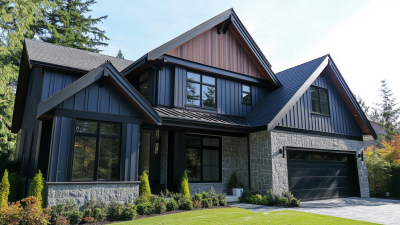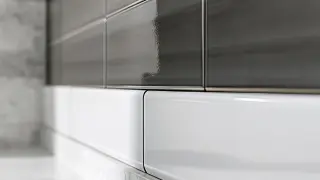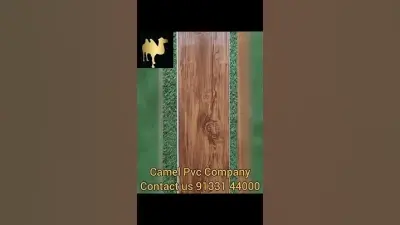Leave Your Message
In modern interior design, every element has a magnified importance, particularly in areas most people do not pay much attention to, such as bathrooms; now, another such element that has grabbed attention being the Bathroom Ceiling Cladding. It is a healthy combination of embellishment with practical use like impressive moisture resistance and easy maintenance. It, in the right material choices, transforms the ordinary bathrooms into luxurious havens; hence Bathroom Ceiling Cladding presses the core of any modern design schemes.
Shandong Eco Decoration Materials Co., Ltd. is a provider of innovative and quality ends in decoration materials. With a wide range of products, including advanced WPC materials, wood veneer, UV board materials, and beyond, we have well-designed products to meet the requirements of residential and commercial spaces. Conclusively, having vast experience in the field- research, development, designing, and manufacturing-allows our customers to use Bathroom Ceiling Cladding into the creative applications of all clients, thus ensuring that each project adequately fulfills functional need with contemporary feeling and elegance.
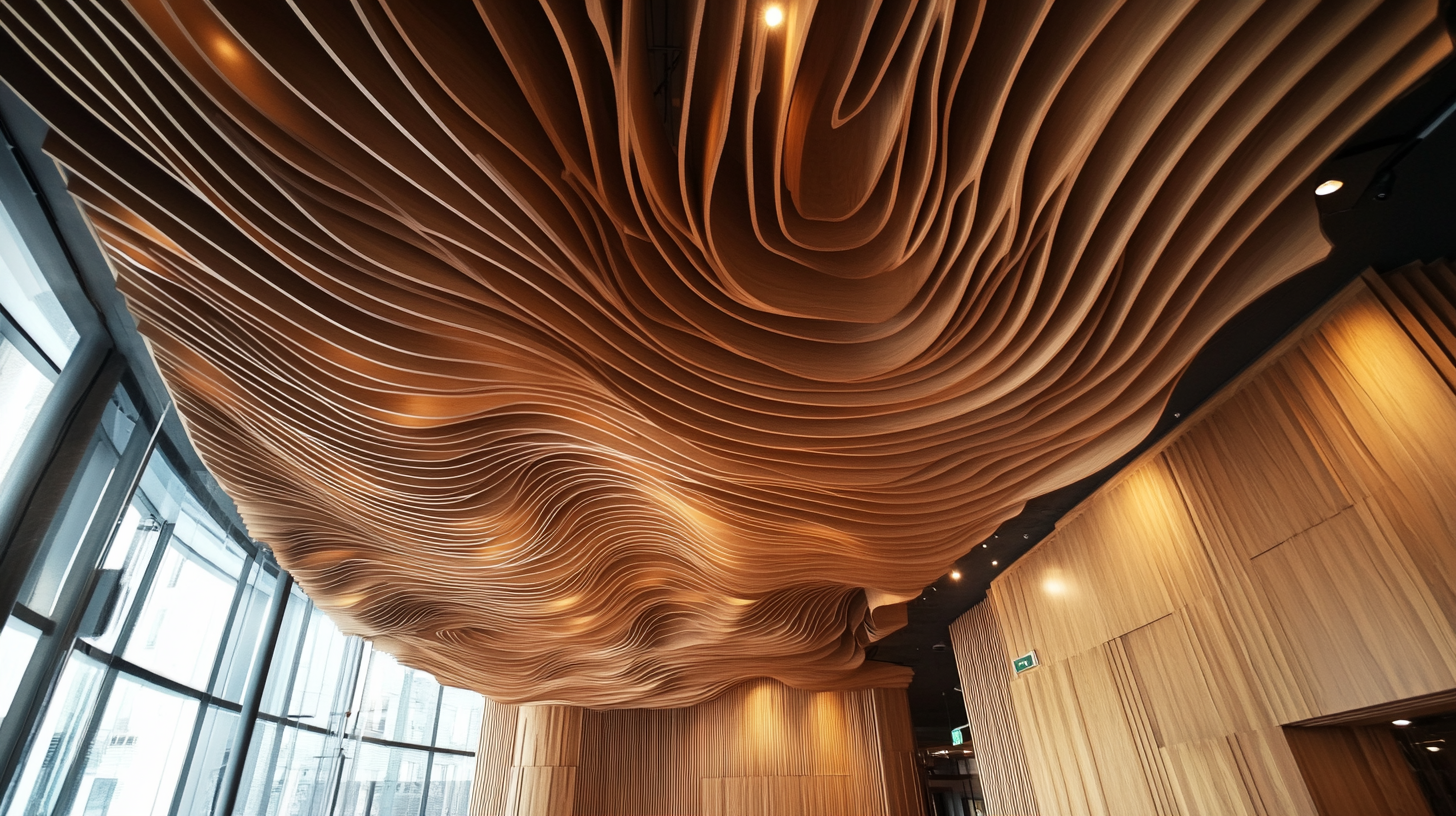
In the recent past, the bathroom has changed its role from a purely functional space to a sanctuary for relaxation and style. One significant contributor to a modern look is ceiling cladding, where innovative materials are showing their might. As the Global Bathroom Interior Market Report 2023 states, ceiling cladding material is set to grow at an annual rate of 7.5%, much to do with aesthetics and practical uses. The innovative materials like PVC panels, natural wood laminates, and mineral ceilings are currently in vogue because of their durability and design flexibility. PVC panels, for instance, have water-resistance properties and come in countless colors and textures, thus making it easy for homeowners to design their own spaces. Also, as per the Building Materials Association, mineral-based materials such as acoustic ceiling tiles are gaining popularity for their sound-proofing properties, which are excellent for a relaxing bathroom. Another major trend impacting ceiling cladding materials is sustainability. EcoConstruction says that a 2022 survey found that 62% of consumers preferred ecological options, propelling manufacturers to make recycled wood cladding and low-VOC paints. These materials make a mark not just in lessening environmental negativity but also enhance the healthy quality of air, contributing brilliantly to sustainability in home design. With these innovations, the bathroom ceiling is no longer that stale surface; it has become a canvas for creativity and innovation, thus changing how we view and use this vital space.
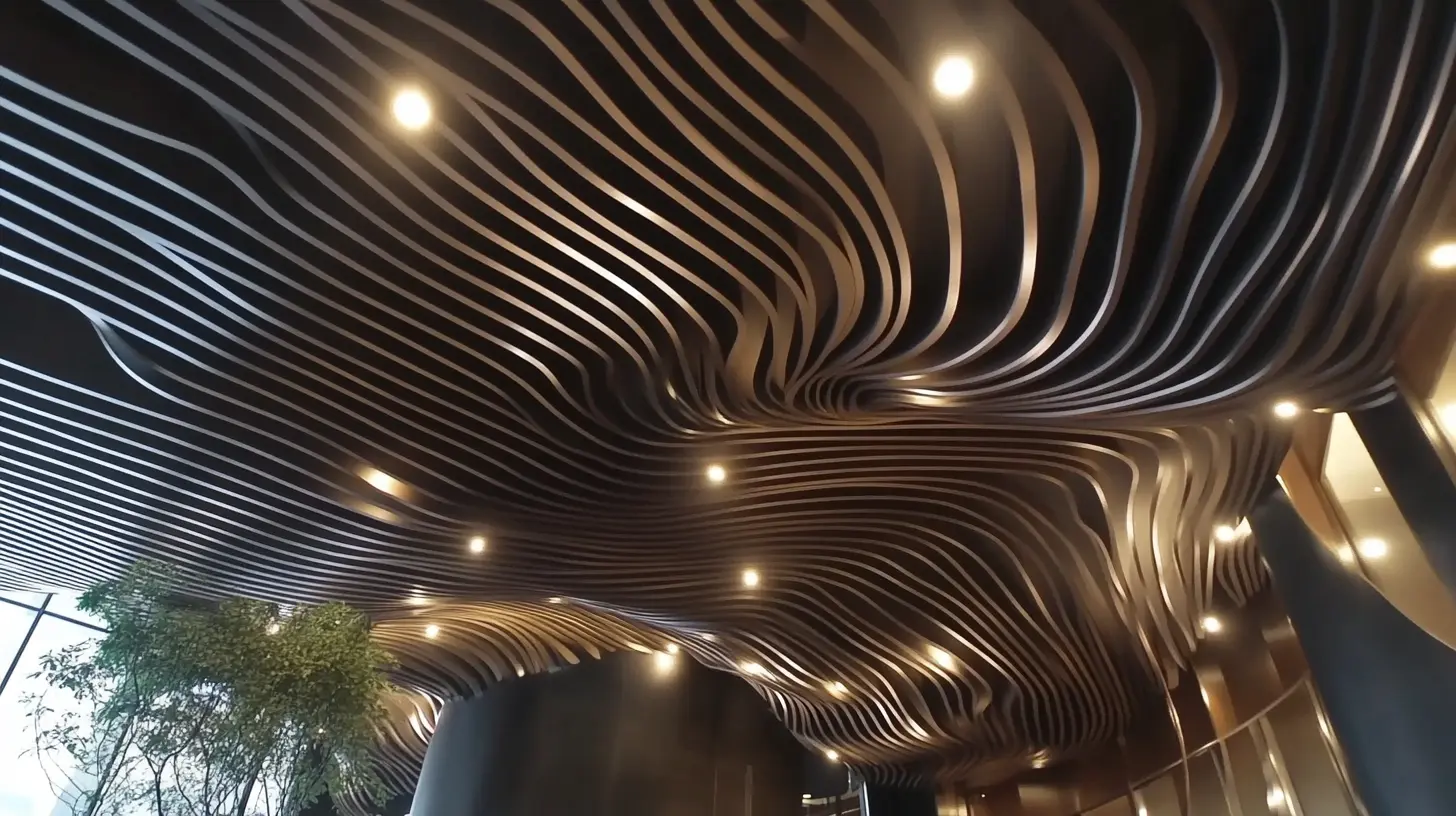
Using ceiling cladding creatively for bathrooms can really change the appearance of a space. The ceiling cladding performs several functions: it gives insulation and creates a moisture-resistant surface. These characteristics are enhanced by the visual properties that make such a great difference in the appeal of a modern interior. Wood, metal, or handloom textile finishes may set very different moods of a space: a very contemporary and cool ambience may be livened up by bright textiles.
Another important function of ceiling cladding is creating a certain atmosphere in the bathroom. Wooden ceilings bring the forest inside, encouraging calmness and serenity in a space, whereas metallic finishes on the ceiling offer an elegant installation with a shiny, modern appeal. With the play of light shimmering across these surfaces, vivid patterns and reflections vibrate in the interiors, creating an added dimension. Art Deco filigree or heavy-patterned textiles would provide even more excitement, rendering the bathroom a stage for a creative showcase and charm in the house.
The use of bathroom ceiling cladding is, thus, a current design trend that allows for its extension into residential and commercial realms. The ceiling itself, once a dark spot, is now exploited by designers and homeowners looking to infuse creativity and style into their projects. Whether for minimalist elegance or bold expressions, ceiling cladding offers a plethora of options to cater to individual preferences, thus serving to convert an otherwise neglected space into a personal sanctuary.
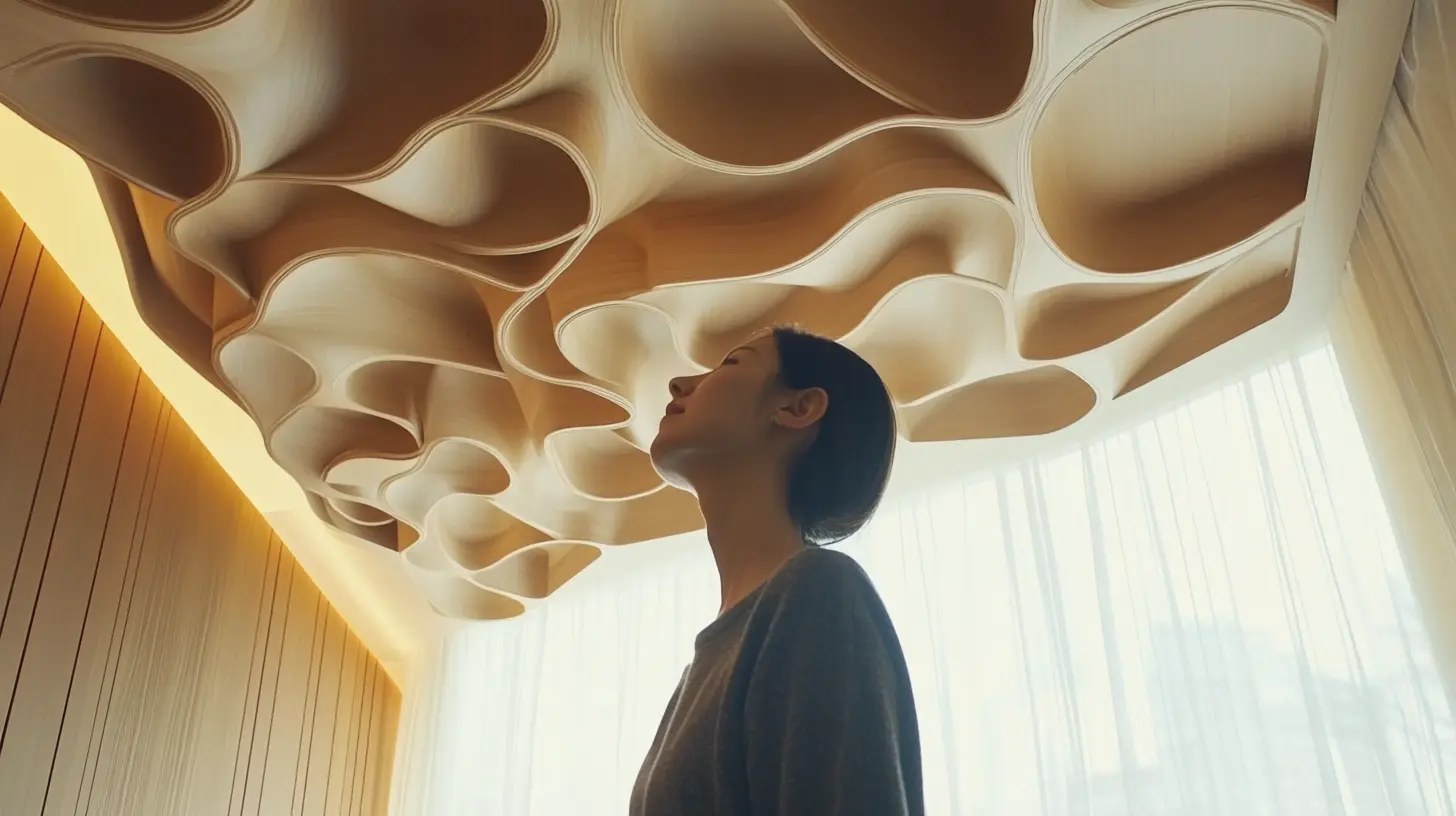
The modern designs of bathroom ceilings cladding are swiftly gaining acceptance primarily on the basis of functionality, such as moisture resistance and durability. The National Association of Home Builders has determined that moisture-related problems account for almost 20' of total home maintenance problems. This has stimulated homeowners to search for atypical materials that can withstand the unusual challenges of the bathroom environment, characterized by high humidity and flooding.
Ceiling cladding from materials such as PVC, vinyl, and assorted composites is gaining further ground mainly owing to their admirable resistance to moisture. The Journal of Building Performance indicates that on an average, PVC ceilings enjoy up to 80% reduction of moisture absorbance in comparison with ordinary drywall. This yields a win-win solution for clean aesthetics on the one hand, and on the other, for eliminating mold and mildew growth, thereby improving the air quality for human breathing in the bathroom space.
The long-lasting trait is another decisive consideration that influences restroom ceiling cladding choice. A lot of the modern cladding systems are being designed and manufactured to resist actual wear and tear in case of bathroom use. Most durable paneling resist peeling, cracking, and warping under all conditions of humidity and moisture. According to a project study by the American Concrete Institute, superior-grade cladding suggests more than a two-decade service life in high-moisture settings, providing homeowners a quicker return on investment. These very aspects corroborate how innovative bathroom-foor-ceiling cladding can fortify modern spaces towards functionality and longevity.
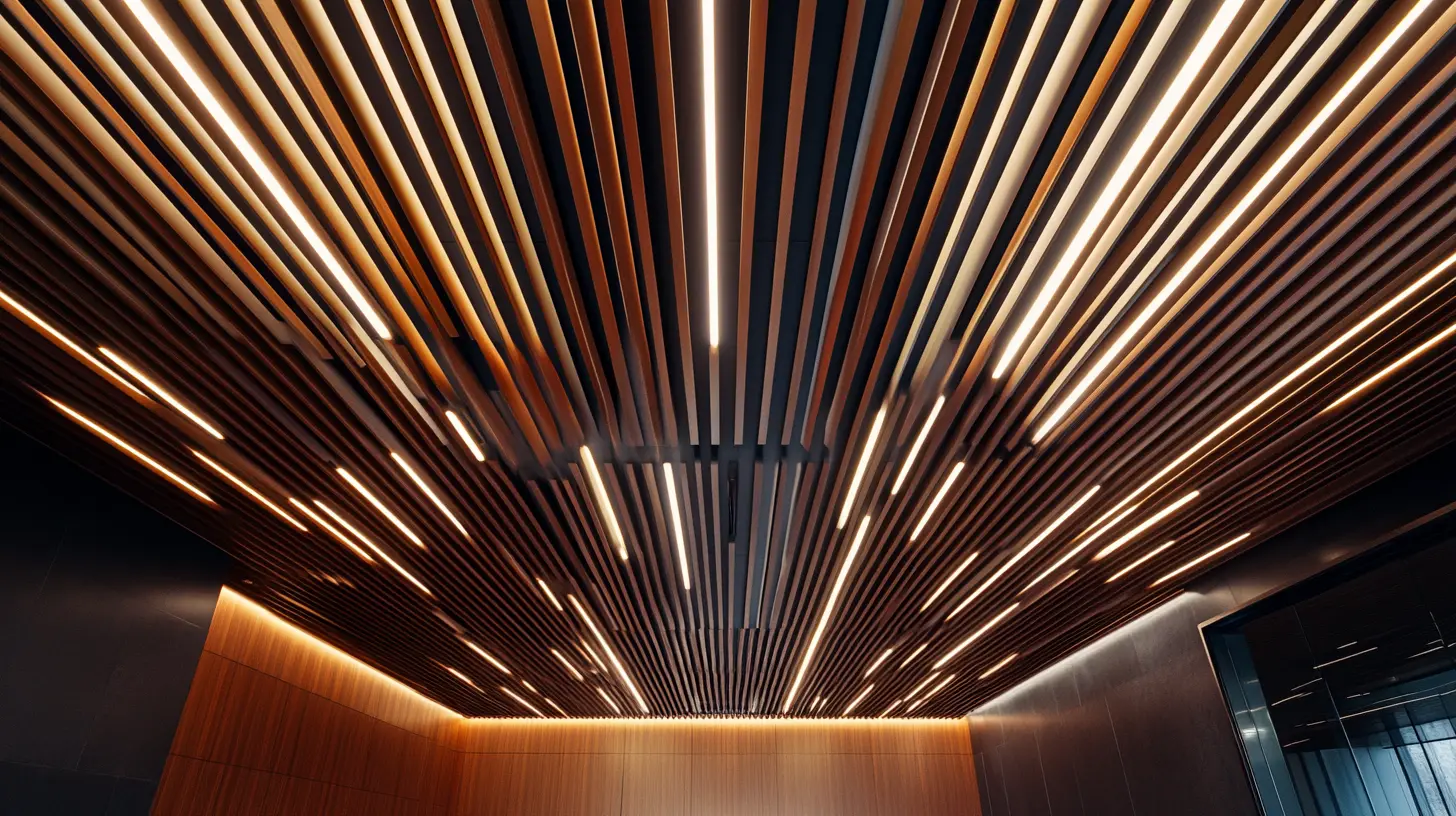
Interior design is a world in flux, with bathroom areas becoming prominent in modern homes. One of the most innovative ways to elevate those spaces is through bold patterns and textures in ceiling cladding. This design trend is changing the scenario in which bathrooms are considered functional spaces into those of luxurious retreats. The ceilings, until now looked upon as an afterthought, are serving as a canvas for artistic expression marking the designer's and homeowner's unique style through vivid designs.
Textures are a substantial factor of the bathroom aesthetic appeal. Wood, metal, or even stones bring life and depth to what would otherwise be a plain ceiling. For example, reclaimed wood cladding can usher in warmth and quaint charm, whereas sleek metal panels would exude contemporary panache. When combined with a strong pattern like geometric designs or floral motifs, they create a statement visual that leads the eye upward and helps the perception of space.
Colors applied boldly announce themselves clearly in bathroom ceilings. Gone are the days of boring white ceilings: homeowners are now going for rich hues that go with their bathroom decor. Deep navy blue, rich greens, and even a daring black can introduce drama and sophistication to break up the monotony of niggly schemes in a fine-designed scheme, color and texture play off one another decorating ceiling cladding, which can transform into allurement and support relaxation and rejuvenation in one of the most personal spaces of our homes.
Bathroom design is fast becoming a conscious attempt to put into aesthetic practices more sustainable materials, with a heightened awareness among consumers about environmentally friendly options in the modern living space. As per the latest market reports, the bathroom furniture market is witnessing a substantial boom, with the global size expected to reach USD 30 billion by 2025-a rare chance to showcase innovative ceiling cladding solutions that underscore aesthetics and the environment.
For bath ceiling cladding, eco-friendly materials are now becoming popular choices such as reclaimed wood, sustainable bamboo, and recycled metal. Eco-intelligent materials help not only in reducing impact on Mother Nature but also have an aesthetically attractive appeal. For instance, reclaimed wood adds warmth and character to any space, while bamboo is cool and contemporary and offers structural integrity along with water resistance. Manufacturers are also providing certified sustainable options under environmental standards, fetching the appeal of eco-minded consumers.
These innovative materials in the bathroom design extend beyond aesthetics; rather, they provide support for the polar shift toward sustainability in home furnishings. Market research suggests that consumers are willing to pay for eco-friendly products, with a large percentage reporting that they buy those brands that promote sustainability. Consequently, a fresh opportunity has arisen for both designers and homeowners to redefine the contemporary bathroom as not only functional spaces but also laboratories for modern innovations and environmental responsibility.
As for the 21st-century bathroom, technology is a new design trend that has found its way into ceiling cladding. Ceilings are no longer limited to being just structures; they are evolving into a smart interface that can enhance the very look and feel of a space while throwing in some bona fide functionality. A more recent industry report by the Flexible Ceiling Solutions Association has shown that the use of smart products, such as lighting systems and environmental sensors built into ceilings, can actually save energy by up to 30% while allowing homeowners to create personalized settings anywhere in the home that align with their everyday needs.
Far more than the fanciful or luxe, integrated sound systems, moisture detection, and lighting controls are becoming requisite characteristics in modern bathroom design. A Home Innovation Research Labs study has shown that about 45% of homeowners are now factoring in smart technologies for their bathroom remodels. That represents a massive shift toward a more connected home environment. Time-and occupancy-adjusted LED lighting further lends to positive experiences and a more inviting atmosphere.
Smart ceiling designs could also integrate advanced extraction systems that monitor humidity and operate automatically, thus reducing the risk of having a healthy indoor air environment polluted by mold formation. These showing by the American Society of Interior Designers obviously add to the physical environment but also add value to the property. Therefore, integrating technology into bathroom ceiling cladding does not only provide room for innovative design; rather, it is a strategic investment compromising comfort and health too.
One part often overlooked while doing the renovation of a bathroom is the ceiling. In addition to beautifying, bathroom ceiling cladding may come in handy in some ways, such as resisting moisture. But homeowners usually face the dilemma of whether to attempt it all by themselves or get a professional installer. Each of these options has its pros and cons, so each homeowner has to weigh the options well.
DIY installation can be gratifying in design, time, and completion. If you are handy and enjoy home projects, cladding your bathroom ceiling entails the strength, control, and freedom of choice in designs on your part. You choose the materials, colors, and patterning, and the project can be fitted into your design and financial plans. Then there is the bonus consideration that DIY saves you a labor cost, which is an attraction for many homeowners. However, it is also a matter of some importance when considering whether you can handle the requisite skills and tools involved. Everything from condensation to ventilation management is a challenge on bathroom ceilings.
On the other hand, when unsure whether your capabilities would match the task, one can truly find peace in hiring a professional. With experience and know-how, the professionals will get the task executed properly and fast. They can also offer tips on doing it yourself, advising you on which materials are ideally suitable for your space and climate and assisting you in avoiding very costly mistakes later on. While hiring professional help may prove costlier, what comes with it are warranties and guarantees, further aiding your chances. At the end of the day, the preference between DIY or professional installing would rest upon your comfort level in doing home improvement and the requirement in the particular bathroom area.
The ceiling cladding for bathrooms has become increasingly changing in modern bathroom design as it allows the homeowner to express style, functionality, and durability. Recent case studies showcase some innovative projects demonstrating a creative approach to various cladding materials. For example, vertical slatted timber cladding was chosen on the bathroom ceilings of a European luxury boutique hotel, creating that warm and inviting effect. This aesthetic also serves a purpose: sound dispersal, a necessary requirement in busy hospitality environments.
The other case for study is a private home renovation where PVC ceiling panels were introduced over a stark, minimalistic bathroom. The winning feature of these panels, aside from a charm that complements the bathroom environment, is obviously that they are water-repellent and easy to clean-a sensible choice where high moisture is concerned. The worldwide market for bathroom cladding, according to market analysis, should touch USD 1.83 billion by 2026, spurred by rising demand by homeowners for sustainability and low-maintenance solutions. As indicated by these case studies, wood composites and lightweight metals are gaining traction, supporting a wider shift to materials that blend style and practicality.
Trendy bathroom ceiling cladding can do wonders to lift an entire space. An interesting example is printed acoustic panels featuring botanical designs; an appealing addition to decor and helpful in sound absorption, which makes that bathroom experience all the more pleasant. There is an exciting trail that designers must walk along with these innovative materials; soon enough, we may see bathroom ceilings being taken up as a medium for expression in the married realms of utility and artistic design.
Popular eco-friendly materials for bathroom ceiling cladding include reclaimed wood, sustainable bamboo, and recycled metal. These materials reduce environmental impact while enhancing the aesthetic appeal of the space.
The trend is driven by increasing consumer awareness and a desire for eco-friendly options, as well as the potential for substantial market growth in bathroom furniture, which is projected to reach USD 30 billion by 2025.
Incorporating eco-friendly materials supports a broader shift towards sustainability in home furnishings and reflects a commitment to environmental responsibility, which many consumers prioritize when choosing products.
PVC ceiling panels are water-resistant, easy to clean, and ideal for high-moisture environments, making them a practical choice for modern bathrooms.
A luxury boutique hotel in Europe used vertical slatted timber cladding on bathroom ceilings to create a warm atmosphere and improve acoustics, enhancing the overall guest experience.
Printed acoustic panels can create botanical themes that enhance visual interest while also contributing to sound absorption, leading to a more comfortable bathroom experience.
Wood composites and lightweight metals are gaining traction due to their combination of style, practicality, and sustainability, aligning with the growing demand for low-maintenance solutions.
A significant percentage of consumers indicate a preference for brands that offer eco-friendly and sustainable options, highlighting the market shift toward responsible products.
As consumers become more eco-conscious, they are increasingly willing to invest in sustainable products, influencing their purchasing decisions towards brands that align with their values.
The total bathroom cladding market is expected to reach USD 1.83 billion by 2026, driven by the demand for sustainable and low-maintenance solutions in home design.
